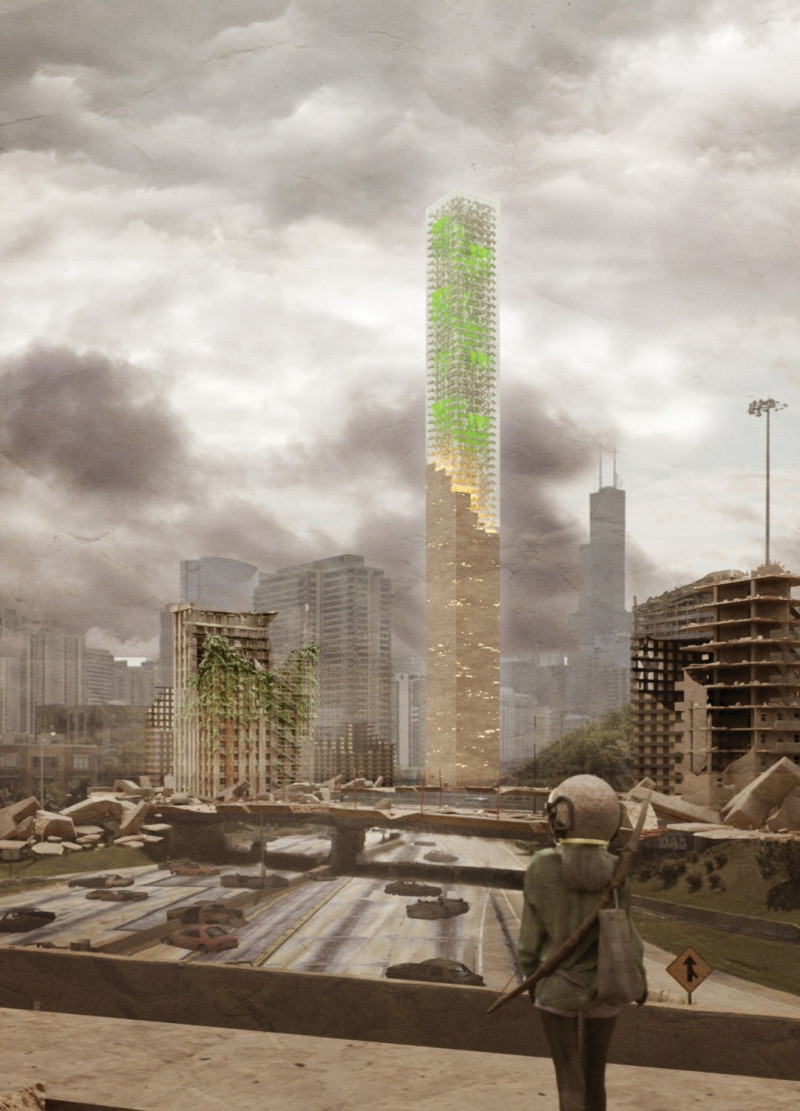5 key facts about this project
The Seed is a thoughtful design that aims to tackle urban sustainability and resource management. Set within a busy city environment, the Tower serves the important roles of producing food and improving air quality. The overall concept focuses on creating a self-sufficient ecosystem within a vertical structure, efficiently using available space while reducing the impact of pollution.
Upper Half
The Upper Half of the Tower features glazed surfaces that support plant photosynthesis and protect against urban pollutants like smog. The transparent design allows natural light to enter the growing areas, encouraging plant development and supporting ecological goals. This part of the structure blends function with a sense of openness, fostering a productive environment for agriculture.
Green House
At the center of the Upper Half is the Green House, which acts as the main area for food production and air purification. By incorporating agricultural practices into the design, it highlights the role of nature in urban settings. The Green House does more than grow food; it also generates oxygen and improves air quality, reflecting a balanced approach to living in cities.
Lower Half
In contrast, the Lower Half of the Tower prioritizes safety, featuring enhanced barriers against potential radiation. This fortified area offers a secure space for residents, protecting them from outside threats while supporting the systems above. The design of the Lower Half emphasizes the importance of security within a complex urban landscape, ensuring that residents feel safe.
Underway
The Underway network acts as the foundation for the agricultural system, delivering essential nutrients and water to the plants in the Upper Half. This underground network illustrates how infrastructure can enhance functionality and support the environmental goals of the Tower. The strategic layout of the Underway emphasizes effective resource management and the commitment to sustainable practices.
Contrasting entry points add another layer of meaning to the design. The heavily guarded 'Candy Express' serves as a controlled entrance, while the 'Old training line' offers a less secure alternative. This arrangement highlights the differences in access and privilege among residents. Through these details, the design of The Seed captures the complexity of modern urban living and the various approaches to integrating environmental sustainability into everyday life.



















































